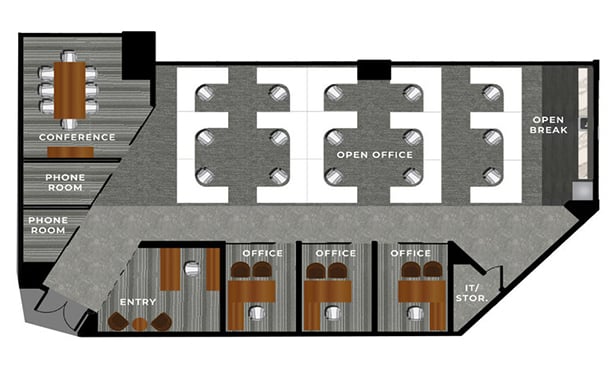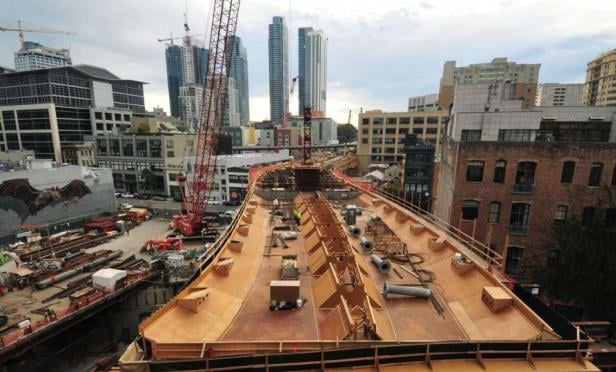BARNEGAT, NJ—Four years ago, one of the most destructive storms to hit the Northeast struck the Jersey Shore, bringing record winds and flooding that destroyed homes and lives. The images of Hurricane Sandy's aftermath remain vivid memories. But many shore residents have rebounded, and rebuilt their damaged homes, making them stronger and safer than they were before the storm.
“We learned a lot of lessons from Sandy, and the most important is to be prepared for the unexpected,” says Matthew Gaudet–Walters, sales representative and rebuilding expert for Walters Homes. “After Sandy, Walters Homes took steps to not only rebuild homes but to do so more resiliently.”
Walters Homes has been streamlining the entire process for residents by handling everything from demolition to rebuilding brand-new homes. Since Sandy, the local residential builder, by the end of the year, will have built 220 new homes in coastal locations ranging from Little Egg Harbor Township to Manasquan. The new homes are elevated on pressure-treated pilings, FEMA flood compliant, Energy Star Certified, and stick built from the ground up.
As reported by GlobeSt.com, Walters has also been involved in several major multifamily reconstruction projects at the Shore, in Barnegat and Toms River.
The Jersey Shore landscape has been forever altered by Hurricane Sandy with old cottages and bungalows replaced by spacious elevated homes. Walters Homes rebuilding experts, Matthew Gaudet-Walters and Austin Bocchicchio discuss some of these changes and the lessons that residents and builders have learned.
Q: What changes in home construction have you seen at the Jersey Shore?
Matthew: Teardowns have become commonplace and people are finding that it's the less expensive route compared to undertaking a major renovation. In many cases, they've outgrown their old layout and want a more spacious, energy-efficient home.
Austin:Those who've decided not to rebuild are selling lots, making it a great time for investors and future shore property owners to buy into the market. There is a decent amount of inventory available all along the coast, and a lot of new people are coming to us that have recently purchased property and want to build something new.
Q: What factors should property owners consider when debating between rebuilding and renovating?
Matthew: There are so many unknown factors and costs associated with a raise and renovate project. There are lots of considerations such as, will the foundation crack when it's raised? Can I get a fixed price for the renovation portion of the project? In most cases, a builder cannot predict with 100 percent accuracy the final cost of a renovation project unless it's been significantly marked up to cover unexpected costs. Contractors generally charge more to work around existing structures.
Austin: Besides the fact that many times it's less expensive to tear down and rebuild, the resale value is greater on a new home. So with new construction, people are getting a house that's built to their specifications, meets FEMA's guidelines and is designed to protect them in the event of flooding.
Q: What are some important lessons that builders learned since Hurricane Sandy?
Matthew: Some of our customers are going through one of the most difficult times in their lives. They count on us to take them through the building process and make it the best experience possible. By offering a turnkey product, we've simplified the experience, and in the end, it takes a lot of the pressure off the buyers.
Austin: We've learned to be proactive when it comes to building a new home so that homeowners are better prepared during the next storm. The new energy code, for example, is evidence the industry is heading in the right direction, and building a high-quality home that is healthier and better for the environment.
Q: Are there any interesting rebuild scenarios you could share?
Matthew: We had a family in Ortley Beach that had a tragic beginning but a happy ending. A family's entire house had completely washed away into the bay along with all of their belongings. We built them a new home that was not only a fresh start but it was a place where they could create new memories. (See photo)
Austin: We built a fully custom home in Manahawkin for a homeowner in the RREM program (Reconstruction, Rehabilitation, Elevation, and Mitigation). His new home had to match the existing footprint. When I met with him at the property to get preliminary measurements, the back of the house was knee deep in water. His new 700-square-foot house is elevated 11 feet in the air, so it's out of harm's way. It's a compact house with an open layout and one of the best views of the bay that we ever built.
Want to continue reading?
Become a Free ALM Digital Reader.
Once you are an ALM Digital Member, you’ll receive:
- Breaking commercial real estate news and analysis, on-site and via our newsletters and custom alerts
- Educational webcasts, white papers, and ebooks from industry thought leaders
- Critical coverage of the property casualty insurance and financial advisory markets on our other ALM sites, PropertyCasualty360 and ThinkAdvisor
Already have an account? Sign In Now
*May exclude premium content© 2024 ALM Global, LLC, All Rights Reserved. Request academic re-use from www.copyright.com. All other uses, submit a request to [email protected]. For more information visit Asset & Logo Licensing.










